Reptile & Amphibian
News Blog
Keep up with news and features of interest to the reptile and amphibian community on the kingsnake.com blog. We cover breaking stories from the mainstream and scientific media, user-submitted photos and videos, and feature articles and photos by Jeff Barringer, Richard Bartlett, and other herpetologists and herpetoculturists.
Friday, November 29 2013
Check out this video "White Leucistic Spanish Ribbed Newt," submitted by kingsnake.com user rhacadank.
Submit your own reptile & amphibian videos at http://www.kingsnake.com/video/ and you could see them featured here or check out all the videos submitted by other users!
Wednesday, November 27 2013
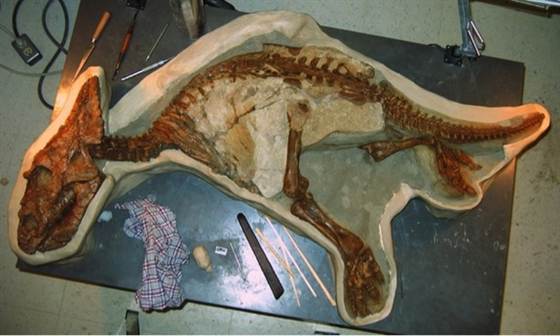 The skeleton of a drowned baby dinosaur was discovered in Canada.
From NBC News:
The toddler was just 3 years old and 5 feet (1.5 meters) long when it wandered into a river near Alberta, Canada, and drowned about 70 million years ago. The beast was so well-preserved that some of its skin left impressions in the nearby rock.
The fossil is the smallest intact skeleton ever found from a group of horned, plant-eating dinosaurs known as ceratopsids, a group that includes the iconic Triceratops.
Finding intact baby dinosaurs is incredibly rare.
"The big ones just preserve better: They don't get eaten, they don't get destroyed by animals," said study co-author Philip Currie, a paleobiologist at the University of Alberta. "You always hope you're going to find something small and that it will turn out to be a dinosaur."
Read more here.
Photo: Philip J. Currie, Robert Holmes, Michael Ryan Clive Coy, Eva B. Koppelhus/LiveScience
Tuesday, November 26 2013
Don't let anyone tell you toxic parenting is all bad. The strawberry poison frog ( Oophaga pumilio) uses to make their babies unpalatable to predators by feeding them unfertilized eggs laced with bitter alkaloids. This means of chemical defense is currently unique to the species.
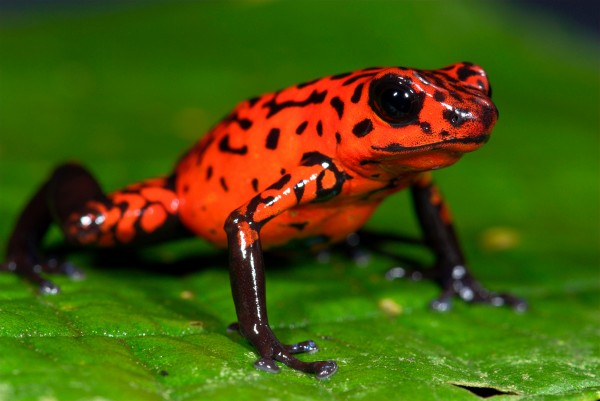
That's the word from a study headed up by researcher Ralph Saporito of Ohio's John Carroll University. From National Geographic:
For their study, the researchers measured alkaloid content in strawberry poison frogs during different stages of development.
In one group, tadpoles were reared and fed by their mothers, and a second group was reared by the researchers and fed with eggs from another species of frog not known to harbor alkaloids.
As the tadpoles from both groups developed, the team analyzed their alkaloid contents. The results were clear-cut: Tadpoles reared by mom contained alkaloids in most stages, whereas tadpoles from the second group showed no sign of these chemicals, according to the study, published November 12 in the journal Ecology.
Read the full story here.
Photo: Robert Pickett/National Geographic
Monday, November 25 2013
 A proposed port development on the Goat Islands in Jamaica threatens the re-introduction of the endangered Jamaican iguana to the two small cays located less than a mile off the coast of Jamaica.
The IUCN Iguana Specialist Group is reporting that the planned port, to be built by the China Harbour Engineering Company, will include extensive dredging and filling in the surrounding area to build a massive trans-shipment port. These small islands were a planned relocation sites for not only the Jamaican iguana, hutia, and Jamaican boa, they are also home to significant numbers of endemic plants, birds, and other species.
The planned port facilities will require development on the mainland as well, opening up the nearby Hellshire Hills, close to the core forest where the Jamaican iguana persists. With over 400 plant species in the Hellshire Hills and Goat Islands area, including 47 Jamaica endemics as well as 11 endemic birds, it is considered one of the largest and most pristine remaining examples of dry tropical forest in the Caribbean.
While the Jamaican government has launched a media campaign to promote the planned port, conservationists and herpetologists have not given up the fight to save the islands and have launched their own in response, starting with a petition at Change.org.
Conservationists are hoping to reach 5,000 signatures and deliver it to the Jamaican government as part of a larger media campaign in early January. To sign the petition, click here.
To read more about the fight against the Goat Islands port, please check out this article in the Jamaica Observer.
After 30 years of captivity, two sea turtles named Touche and Daisy were released off the Desert Islands in Portugal. How's that for a happy ending?
See the release in the video blow.
Friday, November 22 2013
Check out this video "Yummy, salad," submitted by kingsnake.com user manhattan.
Submit your own reptile & amphibian videos at http://www.kingsnake.com/video/ and you could see them featured here or check out all the videos submitted by other users!
Thursday, November 21 2013
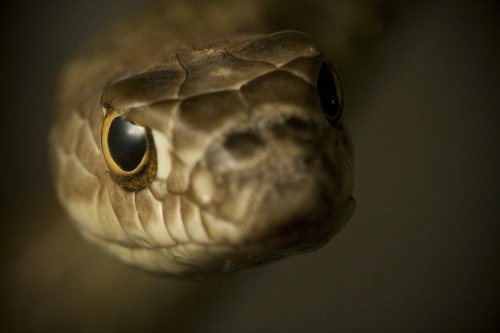 A new study from the University of Waterloo shows that snakes can optimize their vision by controlling the blood flow in their eyes when they perceive a threat.
Kevin van Doorn, PhD, and Professor Jacob Sivak, from the Faculty of Science, discovered that the coachwhip snake’s visual blood flow patterns change depending on what’s in its environment. The findings appear in the most recent issue of the Journal of Experimental Biology.
"Each species' perception of the world is unique due to differences in sensory systems," said van Doorn, from the School of Optometry & Vision Science.
Instead of eyelids, snakes have a clear scale called a spectacle. It works like a window, covering and protecting their eyes. Spectacles are the result of eyelids that fuse together and become transparent during embryonic development.
When van Doorn was examining a different part of the eye, the illumination from his instrument detected something unusual.
Surprisingly, these spectacles contained a network of blood vessels, much like a blind on a window. To see if this feature obscured the snake’s vision, van Doorn examined if the pattern of blood flow changed under different conditions.
When the snake was resting, the blood vessels in the spectacle constricted and dilated in a regular cycle. This rhythmic pattern repeated several times over the span of several minutes.
But when researchers presented the snake with stimuli it perceived as threatening, the fight-or-flight response changed the spectacle’s blood flow pattern. The blood vessel constricted, reducing blood flow for longer periods than at rest, up to several minutes. The absence of blood cells within the vasculature guarantees the best possible visual capacity in times of greatest need.
"This work shows that the blood flow pattern in the snake spectacle is not static but rather dynamic," said van Doorn.
Next, the research team examined the blood flow pattern of the snake spectacle when the snake shed its skin. They found a third pattern. During this time, the vessels remained dilated and the blood flow stayed strong and continuous, unlike the cyclical pattern seen during resting.
Together, these experiments show the relationship between environmental stimuli and vision, as well as highlight the interesting and complex effect blood flow patterns have on visual clarity. Future research will investigate the mechanism underlying this relationship.
"This research is the perfect example of how a fortuitous discovery can redefine our understanding of the world around us," said van Doorn.
The Natural Sciences and Engineering Research Council of Canada supported this project.
Photo: Kevin van Doorn/ University of Waterloo
Wednesday, November 20 2013
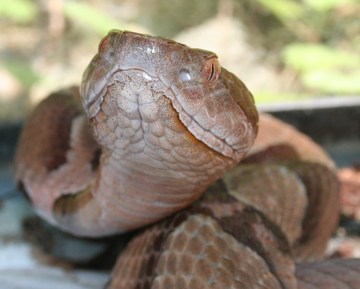 Snake venom and other harmful substances can save lives as well as take them.
From LiveScience.com:
"Poisons can be bad for some things and good for others, including humans," said Michael Novacek, senior vice president of the American Museum of Natural History, at an opening of a new poison-themed exhibition Tuesday (Nov. 12).
[...]
The strongest of poisons occur in evolutionary arms races, Siddall explained. For example, opossums can feed upon some venomous snakes thanks to a resistance to the snakes' venom. In response, the snakes over generations have amped up the toxicity of their venom to keep these marsupial predators at bay. Meanwhile, the opossums continue to evolve resistance to the ever-stronger venom, he said.
Read the full story here.
Photo: kingsnake.com user cochran
Tuesday, November 19 2013
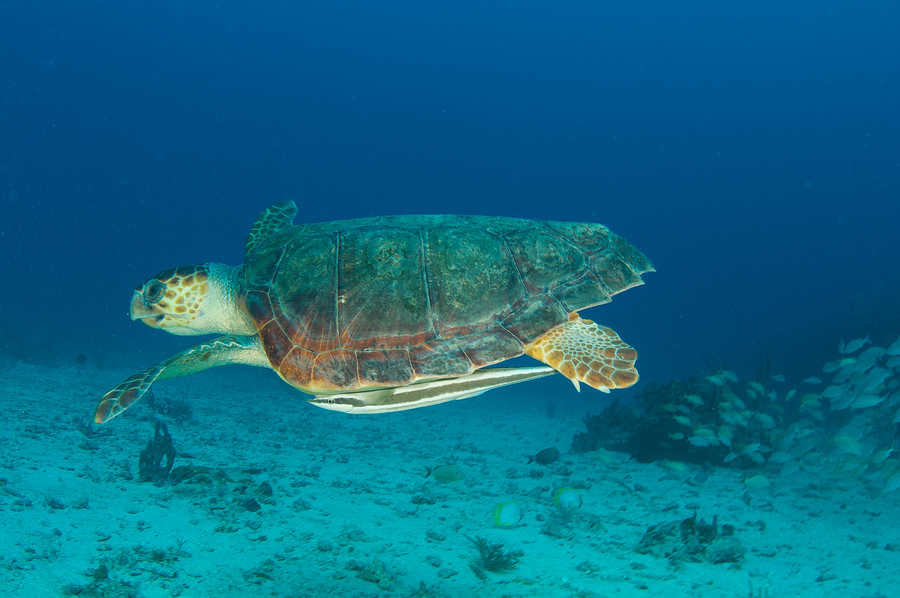 Florida commercial fisher Eddie Toomer was awarded the Gladding Memorial Award by the Gulf and Caribbean Fisheries Institute for his lifetime commitment to protecting endangered sea turtles.
From KBTX.com:
Toomer is most renowned for his important contributions to the design of turtle excluder devices (TEDs) for shrimp trawlers. "TEDs maximize shrimp harvest while allowing endangered sea turtles to escape. Shrimpers' use of TEDs has spared hundreds of thousands of endangered sea turtles around the world," said Pamela Plotkin, director of Texas Sea Grant and author of the book, Biology and Conservation of Ridley Sea Turtles.
With his mom and dad and a dozen or so others, Toomer also is responsible for the 3 million-acre no trawling pink shrimp nursery area in the Gulf.
"I feel fortunate to be a part of the history of the TED," said Toomer. "Finding a successful design was achieved by joining the practical experience and creativity of fishers, with the design ideas and studies of scientists."
Read the full story here.
Friday, November 15 2013
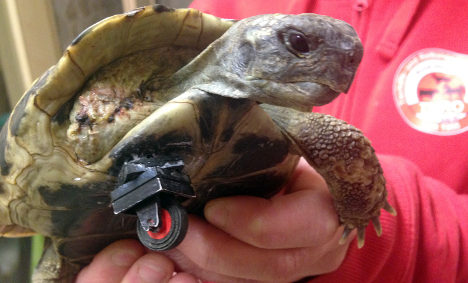 Veterinarians in Germany didn't just treat the injuries on an injured tortoise brought in to a local animal shelter after being inured. They raided the toy box and built him a prosthetic wheeled leg.
From The Local:
"First we fitted a double wheel but it was difficult for him to turn corners so we replaced it with a single wheel and that is much better for him," Dr Panagiotis Azmanis told The Local.
He works at the Birdconsulting International veterinary practice of Marcellus Bürkle in Achern in Baden, and ended up raiding the toy box of the practice manager's daughter for wheels and spacer blocks.
Initially though the focus was on saving the tortoise's life. "He was in pretty bad shape when they brought him to us. The lower part of his front leg was missing, and the upper part was very bad, with bone showing, and maggots in necrotic flesh."
One the animal had been stabilized, the vets amputated the injured leg at the shoulder and treated him with antibiotics and fluids, as well as giving him pain killers.
Then came the question of lifting his fourth corner so he could move around.
"Tortoises need to run free in gardens, so he needed a prosthetic," said Azmanis.
Read the full story here.
Photo: DPA
Thursday, November 14 2013
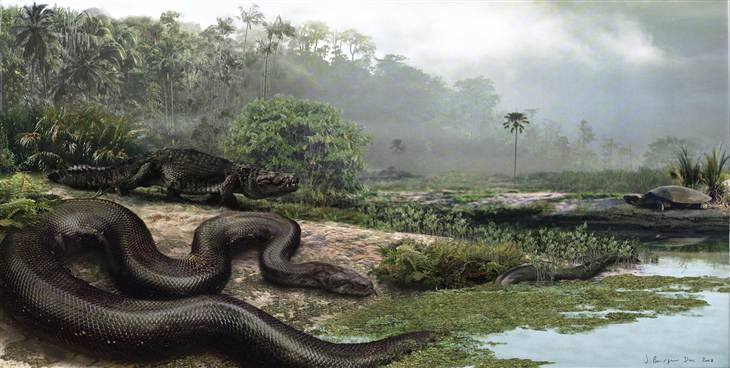 A Florida paleontologist says climate change may turn back the species clock to a day when mammals were tiny and reptiles huge.
From NBC News:
"You see the size of these animals dancing with the climate," said Jonathan Bloch, a paleontologist at the Florida Museum of Natural History.
Bloch delved into the connection between body size and global temperatures, particularly during a hot time known as the Paleocene-Eocene Thermal Maximum, on Monday during the ScienceWriters2013 conference here in Gainesville. Like so many facets of global change, the lessons from the distant past don't make the far future look all that sunny. Super-snakes, anyone?
Read the full story here.
Photo: Artist’s conception of the largest snake the world has ever known from Jason Bourque / University of Florida.
Wednesday, November 13 2013
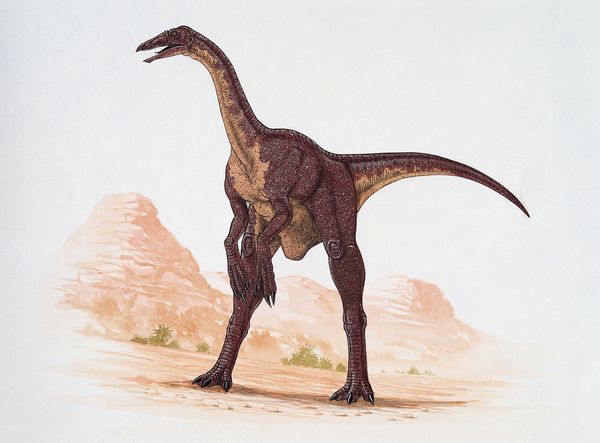 Considering they're still making news 66 million years after going extinct, dinosaurs are clearly one of humanity's favorite animals. Here is a round-up of dino-centric stories from the last week:
From National Geographic:
An enigma for decades, a giant dinosaur known only for its brawny arms actually towered over the local tyrannosaurs, paleontologists report. It also ate plants and perhaps sported a surprising sail or hump on its back.
The dinosaur Deinocheirus mirificus (which means, essentially, "terrible hands that look peculiar") had been a stubborn fossil enigma for nearly 50 years.
Nothing except the dinosaur's eight-foot-long arms, tipped in three huge claws, and a handful of other bone fragments had ever been found.
But at the annual Society of Vertebrate Paleontology conference held in Los Angeles last week, Korea Institute of Geoscience and Mineral Resources paleontologist Yuong-Nam Lee presented a wealth of new fossils that make Deinocheirus stranger than anyone had previously imagined.
From Discovery.com:
A nursery of bizarre-looking dinosaurs known as therizinosaurs has been found in the Gobi Desert in Mongolia.
The nesting colony contained at least 17 clutches of eggs.
"Not only is this the largest colony of nonavian theropods, but this is the best documented site," said study co-author Yoshitsugu Kobayashi, a vertebrate paleontologist at Hokkaido University in Japan, who presented the findings here at the 73rd annual Society of Vertebrate Paleontology conference.
The finding suggests the odd little creatures were social animals. Read more...
From NBC News:
Paleontologists on Wednesday unveiled a new dinosaur discovered four years ago in southern Utah that proves giant tyrant dinosaurs like the Tyrannosaurus rex were around 10 million years earlier than previously believed.
A full skeletal replica of the carnivore — the equivalent of the great uncle of the T. rex — was on display at the Natural History Museum of Utah alongside a 3-D model of the head and a large painted mural of the dinosaur roaming a shoreline.
It was the public's first glimpse at the new species, which researchers named Lythronax argestes (LY'-throw-nax ar-GES'-tees). The first part of the name means "king of gore," and the second part is derived from poet Homer's southwest wind. Read more...
Photo: National Geogrphic
Tuesday, November 12 2013
 The Chicago Herpetological Society is caring for a two-foot alligator found under an escalator at Chicago's O'Hare Airport.
From the Chicago Tribune:
The group has about 500 members, including about 30 in the Chicago area who open their homes, bathtubs and backyards to reptiles and amphibians who need a place to stay or recover. While by many accounts this was the first alligator found at the airport, it's not the first Floridian reptile found in Illinois that the volunteers have taken in.
The Illinois Department of Natural Resources confiscates a dozen to two dozen alligators every year, said Scott Ballard, the department's expert in herpetology, the branch of zoology that pertains to the study of reptiles and amphibians.
No one in the state, other than zoos and licensed facilities, should have one. Because the reptile is protected by the U.S. Fish and Wildlife Endangered Species Act, a permit is required to own one in Illinois. The state stopped issuing permits for people to keep them as pets about a decade ago, Ballard said. While violators can be convicted of a Class A misdemeanor under the state's Endangered Species Protection Act, a spokesman for the Chicago Police Department said there is no criminal investigation into the abandoned animal at O'Hare.
Read the full story here.
Photo: Chicago Tribune
Monday, November 11 2013
Check out this video "Living Art," submitted by kingsnake.com user phiff1.
Submit your own reptile & amphibian videos at http://www.kingsnake.com/video/ and you could see them featured here or check out all the videos submitted by other users!
Friday, November 8 2013
 Tenants in a Georgia apartment complex are suing over what they call an invasion of snakes on the property -- indoors and out.
From WSB TV:
Shawn Davis told Channel 2's Tom Regan she spotted one slithering down her hallway and another in a fruit bowl.
"The first was a baby copperhead; the second was a rat snake. My husband said since the last two snakes, he found two more. But he didn't want to tell me about it, cause I'm a nervous wreck," Davis said.
Residents first contacted Channel 2 Action News about the problem in September. They reported sightings of a half-dozen snakes, including a six-foot-long copperhead that was trapped in an apartment breezeway and killed.
Davis and her husband, Paul Patterson, said they repeatedly reported their concerns to management and requested moving into another building but were told that was not possible.
Earlier this week, they filed a lawsuit accusing apartment management of negligence in failing to control the population of venomous snakes. The suit seeks unspecified damages.
Read the full story here.
Photo: kingsnake.com user mrtigger
Wednesday, November 6 2013
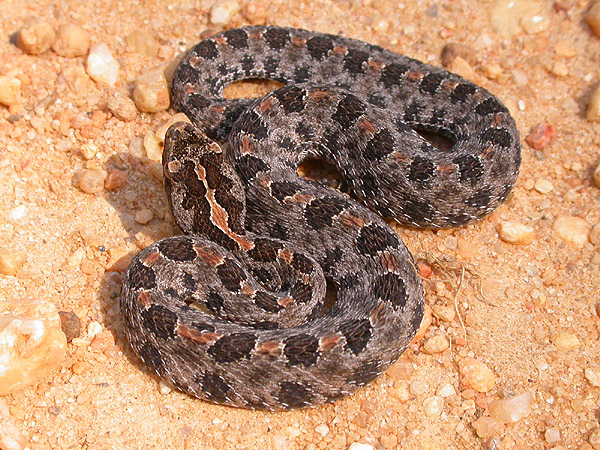 In a world where "rattlesnake round-ups" are considered good family fun, the arrest of a Florida man who tortured and killed a rattler comes as a refreshing change.
From Tallahassee.com:
According to the weekly Florida Fish and Wildlife Conservation Commission law enforcement report for Oct. 25, in mid-September, Ward Lee Waff "taunted the pygmy rattlesnake continuously … kicked the snake into the roadway, attempting to get a car to run over the snake," and then shot it repeatedly with a .22 caliber rifle, sending it flying off the roadway.
In the video, Waff, 45, asks the snake if it would "bite one of my dogs. Would you bite one of my children?" before capturing it and holding it before a number of braying dogs in the back of a truck. He can be heard laughing as he torments the reptile.
[...]
In the report, Waff is described as having a criminal history with FWC and is "currently on probation for fish and wildlife violations that were committed in the past."
Read the rest of the story here.
Photo: kingsnake.com user SalS
Tuesday, November 5 2013
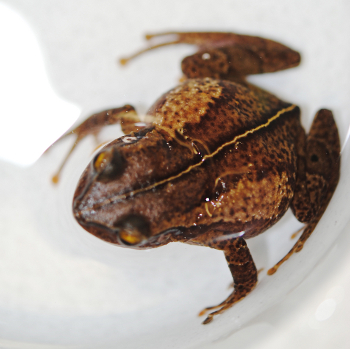 Scientists from the Philadelphia Zoo are working to save the frogs of Haiti.
From Scientific American:
As much as 99 percent of Haiti has been deforested over the past few decades, as the country’s desperate people have cut down trees to make way for agriculture or charcoal production. This massive habitat loss has put the entire nation’s biodiversity at risk. Only a few untouched habitats remain.
The La Hotte land frog’s habitat is one of those areas. "It’s a very beautiful forest," (Carlos) Martinez (Rivera, amphibian conservation biologist with the Philadelphia Zoo,) says. "There are a lot of tree ferns, pines and magnolia trees. It feels like going to any other tropical rainforest. But it’s a very tiny patch of forest." The trees are still being cut down to produce charcoal or to clear land for cash crops such as parsley, celery, broccoli and carrots.
With so much of the country already deforested and more trees likely to be lost in the coming years, the Philadelphia Zoo in 2010 set out to save some of Haiti’s endemic frogs that live in those fading forests. They captured 154 frogs from nine species and brought them back to Philadelphia to establish a captive breeding program. "You can protect wildlife like frogs in a small space," says the zoo’s chief operating officer, Andy Baker. "Trying to keep a genetically viable population of tigers takes the entire global zoo community, whereas in a relatively small room you can hold a genetically and demographically viable population of an entire species of frog. Our return on investment on species protection for animals like reptiles, amphibians and invertebrates can be very high."
Read more here.
Photo: Carlos C. Martínez Rivera, the Philadelphia Zoo
Monday, November 4 2013
Check out this video "Snake Whisperer," submitted by kingsnake.com user smetlogik.
Submit your own reptile & amphibian videos at http://www.kingsnake.com/video/ and you could see them featured here or check out all the videos submitted by other users!
Friday, November 1 2013
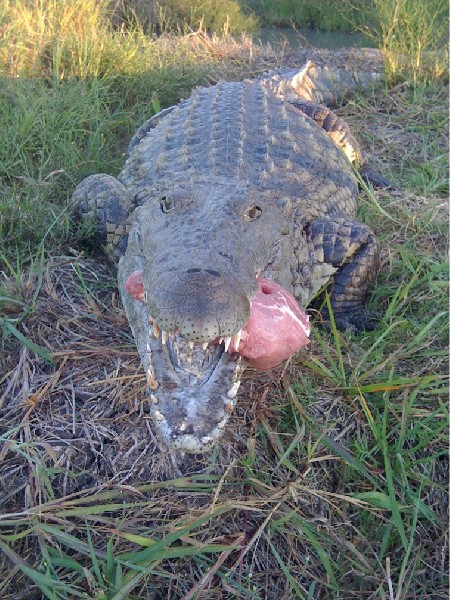 Planning on heading for next year's G20 Summit in Australia? Don't bring your snake.
From the Brisbane Times:
Police have been granted the power to search anyone carrying eggs, cans of beans, model planes, surfboards, insects or reptiles near security areas, under new laws for the G20 summit.
The G20 Safety and Security Bill was passed in Parliament on Tuesday night, making it easier for police to strip search and arrest trouble makers during next year's G20 summit.
Included in the bill is a vast list of items banned from designated "security areas" in Brisbane and Cairns.
As well as knives, swords, guns and explosive tools, the list of prohibited items includes glass bottles or jars, metal cans or tins, eggs, reptiles and insects.
Advertisement
Under the laws, a police officer may seize a prohibited item if the officer reasonably suspects a person in a security area has possession of the item without a lawful excuse, or if the person is about to enter the restricted area with a prohibited item without a lawful excuse.
Read the full story here.
Photo: kingsnake.com user cdieter
|



